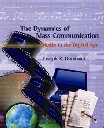INTERNET TIMELINE 1970 The Department of Defense creates ARPANET, the forerunner of the Internet. 1972 E-mail becomes the most used feature of ARPANET. Ray Tomlinson chooses the @ symbol to represent addresses. 1982 The term "Internet" is used for the first time. 1982-1987 Increasing numbers of personal computers and network servers allow many companies and individuals to join ARPANET. 1983 TCP/IP becomes the universal network language. 1984 The domain names system (DNS) is introduced. Initial domains are .com, .edu, .gov and .org. 1985 America Online (AOL) begins operation. 1990 A victim of its own success, ARPANET is decommissioned, leaving only the network of networks called the Internet. 1992 Tim Berners-Lee creates what will eventually become the World Wide Web. 1992 The term "surfing the net" invented by Jean Amour Polly. More that 1,000,000 host computers linked to the Internet. 1993 Marc Andreesen and a group of students at the University of Illinois create a web browser called Mosaic that will eventually become Netscape. 1995 AOL, Prodigy, Compuserve begin to provide Internet access. 1998 E-commerce named technology of the year. 2000 AOL merges with Time Warner. 2000 More than 20,000,000 sites on the World Wide Web. | 


 2002 McGraw-Hill Higher Education
2002 McGraw-Hill Higher Education